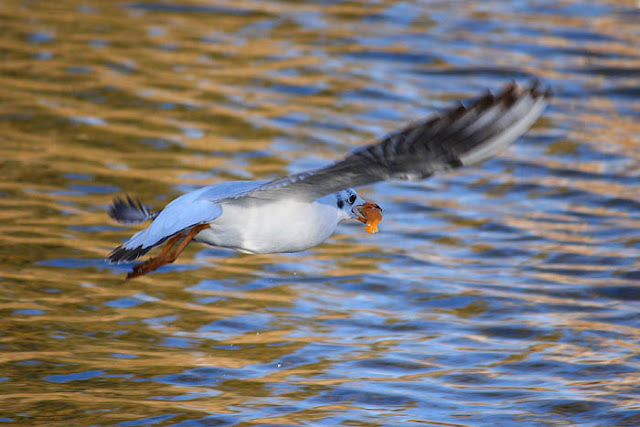This gull breeds in colonies in large reed beds or marshes, or on islands in lakes. Like most gulls, it is highly gregarious in winter, that's when a sizeable flock visits our pond and hangs around until spring. It is not a pelagic species, and is rarely seen at sea far from coasts.
The Mediterranean Gull's an opportunistic omnivore, feeding on fish, worms, scraps, insects, offal and even carrion.
 |
| Mediterranean Gull (Ichthyaetus melanocephalus) on the water (© LightColourShade. All rights reserved) |
 |
| Mediterranean Gull (Ichthyaetus melanocephalus) adults perched on handrail (© LightColourShade. All rights reserved) |
 |
| Mediterranean Gull (Ichthyaetus melanocephalus) adults in winter (© LightColourShade. All rights reserved) |
 |
| Mediterranean Gull (Ichthyaetus melanocephalus) flying over the water (© LightColourShade. All rights reserved) |
 |
| Mediterranean Gull (Ichthyaetus melanocephalus) and mallard ducks (Anas platyrhynchos) fighting for food. (© LightColourShade. All rights reserved) |
+with+a+piece+of+bread+in+the+beak.jpg) |
| Mediterranean Gull (Ichthyaetus melanocephalus) with a piece of bread in the beak (© LightColourShade. All rights reserved) |
Gulls are among my favorite photographic subjects, and you have done a masterful job of catching their variegated activities. But I just LOVE your second picture!
ReplyDeleteThanks, actually the second one is my favourite too. I adore gulls and seabirds in general, I envy the freedom and elegance of their hovering flight. Lucky birds, as long as they don't get into human hands.
Delete